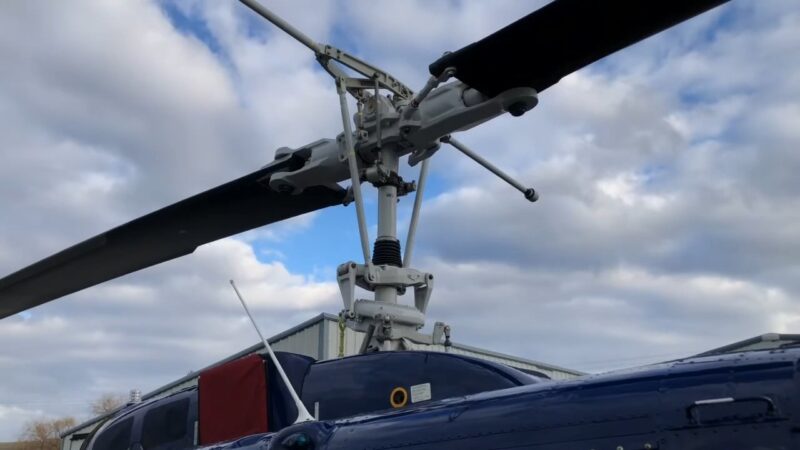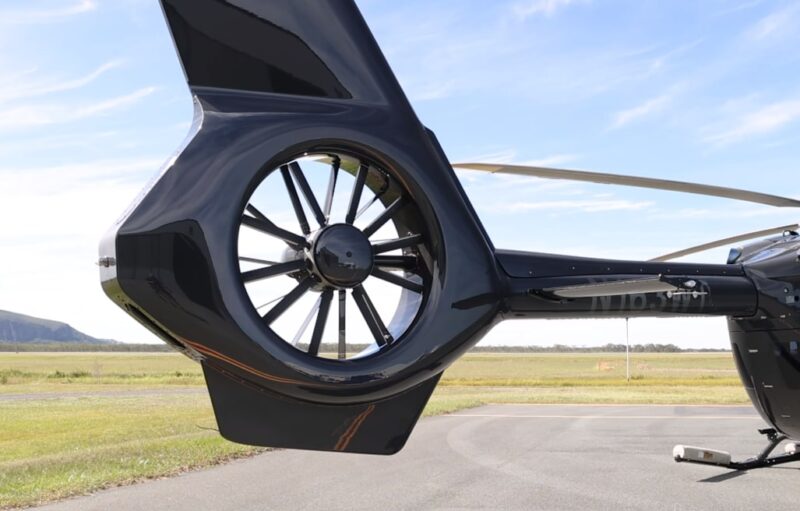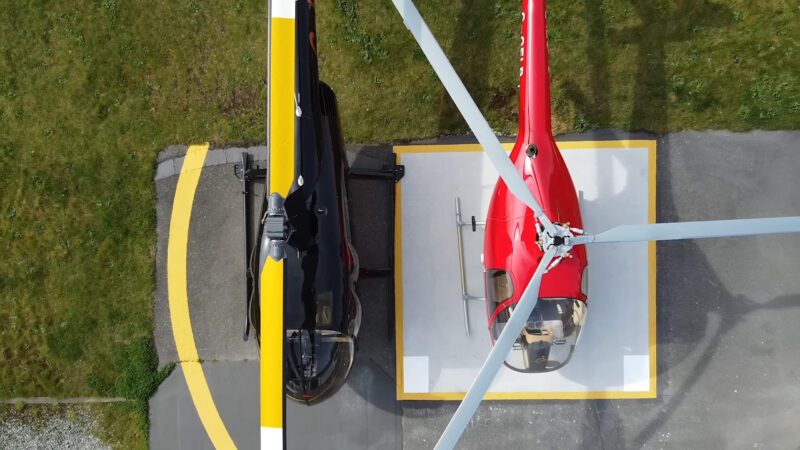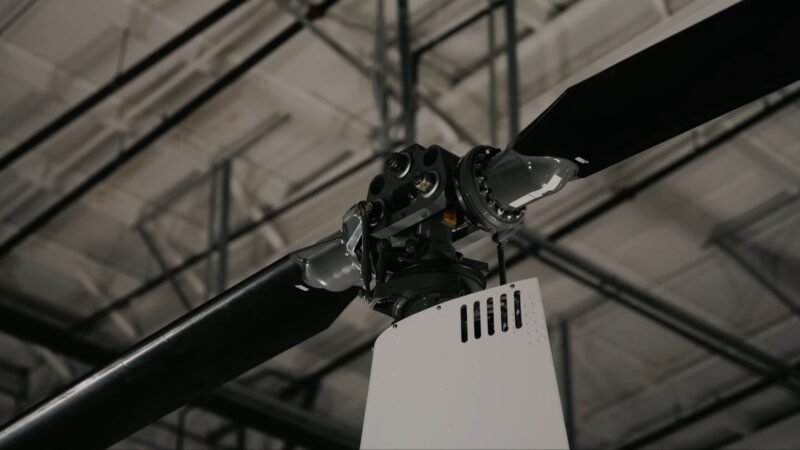The primary function of helicopter propellers is to generate lift and provide thrust. This is achieved through the rotation of the rotor blades, which act similarly to wings, creating a pressure difference that lifts the helicopter.
The complexity of controlling a helicopter arises from the need to manage lift, thrust, and torque simultaneously, which is intricately linked to the design and operation of its propellers.
Key Takeaways
- Rotor Configuration Diversity: Various rotor setups, such as single, tandem, coaxial, and intermeshing rotors, cater to specific flight dynamics and operational needs.
- Tail Rotor Innovations: Advancements like the Fenestron and NOTAR systems improve safety, noise levels, and efficiency.
- Material Advancements: The adoption of composite materials enhances rotor blade performance, leading to better efficiency and safety.
- Environmental Benefits: Modern designs, especially the NOTAR system, offer reductions in noise pollution and potential fuel savings, highlighting a push towards environmentally friendly aviation technologies.
Main Rotor Configurations

The main rotor of a helicopter is responsible for lift and a significant portion of the vehicle’s maneuverability.
Its design is a critical factor in the helicopter’s overall performance, influencing aspects such as stability, speed, and payload capacity.
| Rotor System | Description |
|---|---|
| Single Rotor Systems | The quintessential helicopter design incorporates a single main rotor to provide lift and thrust. This configuration necessitates a secondary mechanism, typically a tail rotor, to counteract the rotational torque that the main rotor generates. |
| Tandem Rotors | Featuring two large rotors mounted longitudinally, this design allows for larger helicopters, often used for heavy lifting and transport. The counter-rotating rotors naturally balance the torque forces, negating the need for a tail rotor. |
| Coaxial Rotors | By placing two rotors on the same axis but rotating in opposite directions, the coaxial design offers excellent stability and control, particularly in compact helicopters, by effectively cancelling out torque without requiring additional space for a tail rotor. |
| Intermeshing Rotors | Known as synchropters, these helicopters use two rotors that intermesh without colliding, thanks to their precise timing. This design offers compactness and eliminates the need for a tail rotor, providing an efficient torque counterbalance. |
Tail Rotor Innovations

The tail rotor’s primary role is to counteract the main rotor’s torque and enable directional control.
Its traditional design has seen several innovative alterations aimed at improving performance and safety.
- Fenestron: This enclosed rotor system enhances safety and reduces noise, making it ideal for operations in populated areas. Its design also contributes to improved aerodynamic efficiency.
- NOTAR: Standing for No Tail Rotor, this system uses directed airflow to create a counter-torque effect, significantly reducing noise and increasing safety by removing the physical tail rotor blades.
Advancements in Materials and Design

The evolution of rotor blade materials has significantly impacted helicopter performance.
Modern rotor blades are often made from composite materials, offering superior strength, flexibility, and weight advantages over traditional metal blades.
These materials allow for more complex aerodynamic shapes, increasing efficiency and reducing noise.
Aerodynamic Challenges and Solutions
Helicopter rotor design must address several aerodynamic challenges to optimize performance:
- Dissymmetry of Lift: The difference in lift between the advancing and retreating blades is addressed through blade flapping and cyclic pitch adjustments, allowing for balanced lift across the rotor disk.
- Vortex Ring State: This potentially hazardous condition occurs during vertical descents. Advanced rotor designs and pilot training focus on preventing and recovering from this state.
- Ground Resonance: This is a vibrational phenomenon that can affect helicopters with articulated rotor systems. Design strategies aim to mitigate these vibrations through careful tuning of rotor and landing gear systems.
The Future of Rotorcraft Design

As technology advances, so too does rotorcraft design. Future helicopter propellers may incorporate even more sophisticated materials and aerodynamic concepts, such as active shape control and adaptive materials, to further enhance performance, efficiency, and safety.
The integration of electric propulsion systems could revolutionize rotor design, reducing environmental impact and opening new possibilities in urban air mobility.
FAQs
Why are some helicopter blades wider at the tips than at the base?
The variation in the width of helicopter blades from base to tip, known as blade tapering, is designed to optimize aerodynamic efficiency and performance.
Wider tips can help in reducing the vortex strength at the blade tips, which decreases drag and noise. Additionally, this design can improve the lift distribution across the blade, making the helicopter more power-efficient and stable during flight.
How do helicopter propellers adjust to different flight conditions?
Helicopter propellers adjust to different flight conditions through a mechanism known as “cyclic” and “collective” pitch control.
The collective pitch control allows the pilot to increase or decrease the pitch angle of all the rotor blades simultaneously, effectively controlling the helicopter’s altitude.
The cyclic pitch control, on the other hand, changes the pitch angle of each blade individually as it rotates around the rotor disk, allowing the helicopter to move forward, backward, or sideways.
These adjustments are crucial for maneuverability and stability in varying flight conditions.
Can helicopters with coaxial rotors fly faster than those with single rotors?
Helicopters with coaxial rotors have the potential to fly faster than those with single rotors due to their superior aerodynamic efficiency and the elimination of torque-induced yaw, which requires energy and creates drag in single rotor helicopters.
The actual speed advantage depends on the overall design of the helicopter, including its aerodynamic shape, weight, and engine power.
Coaxial rotor systems also reduce the risk of retreating blade stall at high speeds, potentially allowing for higher forward velocity.
What is the significance of rotor blade twist in helicopter design?
Rotor blade twist, where the pitch angle of the blade decreases from root to tip, is significant in helicopter design as it helps to distribute lift more evenly across the entire length of the blade.
This distribution is crucial because the tip of the blade moves through the air faster than the root, potentially generating more lift at the tip if the pitch angle were uniform.
By reducing the pitch angle toward the tip, designers can prevent excessive lift at the blade tips, which can lead to inefficiencies and control issues.
How do helicopters perform in high-altitude conditions, considering the thinner air?
Helicopters face challenges in high-altitude conditions due to the reduced air density, which can significantly decrease rotor efficiency and the amount of lift generated.
To compensate, helicopters designed for high-altitude operations often feature larger rotor blades and engines with increased power output to maintain lift and performance.
Advanced materials and blade designs also contribute to optimizing performance under these conditions.
Are there any environmental benefits to the NOTAR system compared to traditional tail rotors?
The NOTAR (No Tail Rotor) system offers several environmental benefits over traditional tail rotors. Firstly, it significantly reduces noise pollution, a critical factor in urban areas and sensitive environments.
By eliminating the exposed tail rotor, the NOTAR system also reduces the risk of wildlife strikes and accidents, contributing to safer operations in natural habitats.
Additionally, the aerodynamic efficiency of the NOTAR system can lead to reduced fuel consumption, contributing to lower carbon emissions in comparison to conventional tail rotor designs.
Final Words
The diversity of helicopter propellers is a testament to the complexity and versatility of rotary-wing flight. Each design variation addresses specific challenges and requirements, from aerodynamic efficiency and payload capacity to noise reduction and operational safety.
As technology progresses, the evolution of helicopter propellers will continue to push the boundaries of what is possible in aviation, ensuring that helicopters remain indispensable tools for a wide range of applications.
